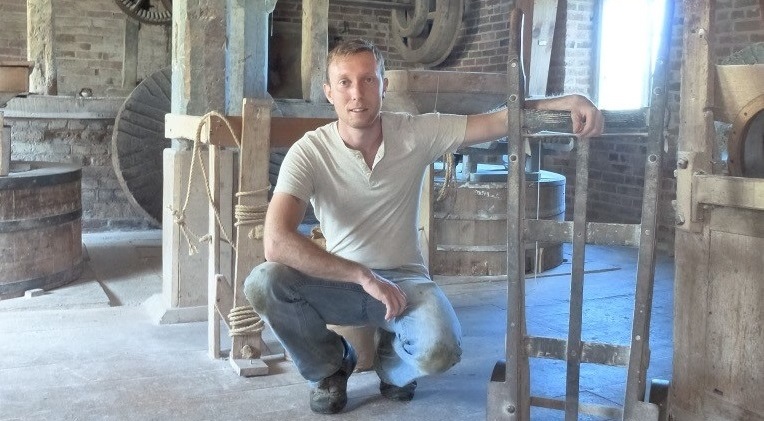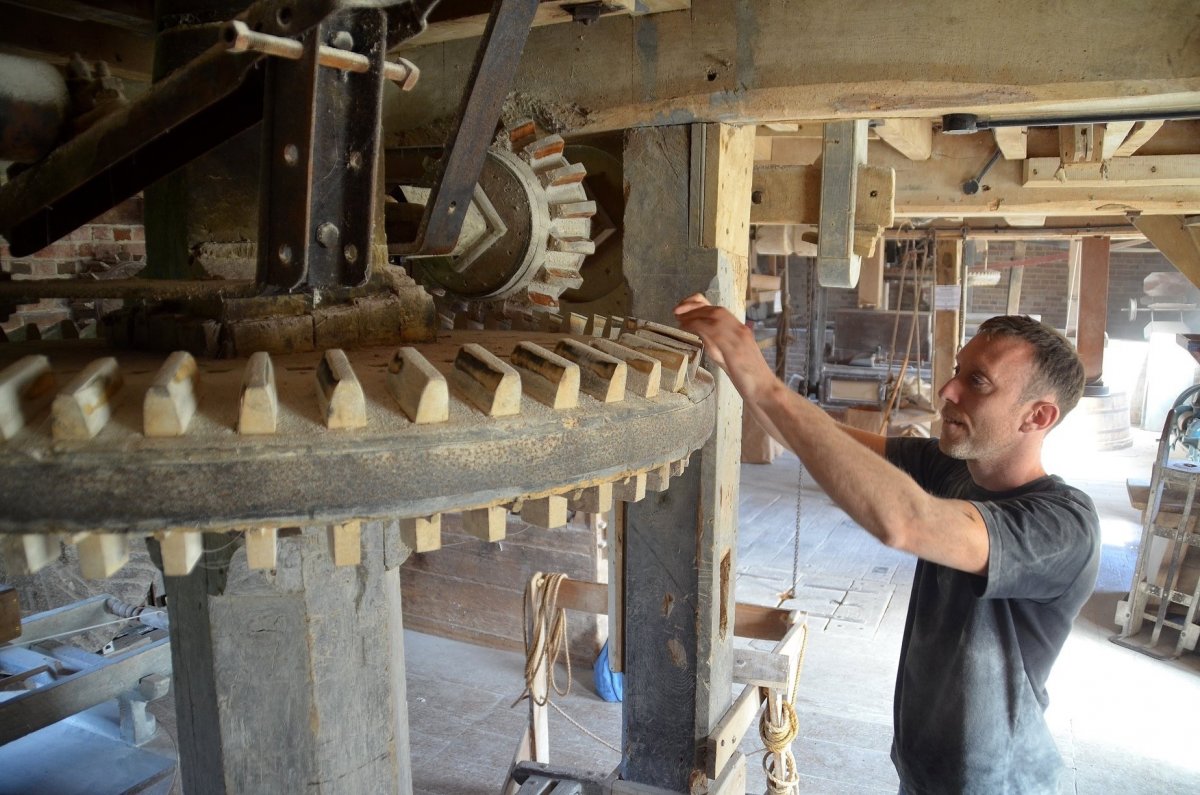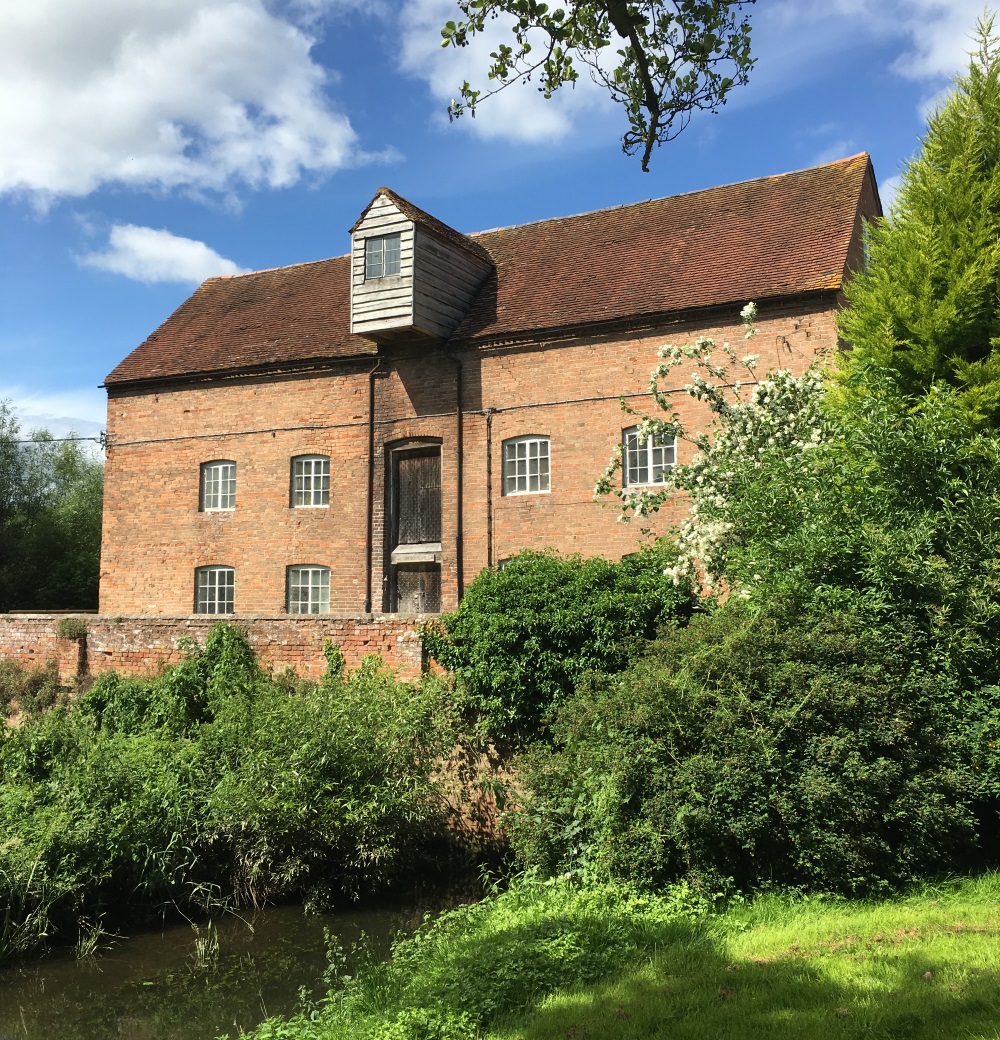Traditional millwrighting has been practiced in the UK for over 700 years. Today millwrighting is a critically endangered craft and so for the first time, we are recruiting for millwright applicant on our crafts Fellowship for 2020.
We asked 2009 SPAB Fellow Karl Grevatt to share his experience of this unique training scheme, and of moving from carpentry into millwrighting.

To be honest when I applied for the William Morris Craft Fellowship I had no idea what effect it would have on me or my career.I started my working life in building conservation as a labourer, gradually working my way up through the ranks; studying carpentry along the way but I was pretty multi skilled. I had a vague interest in mills and was keen to learn more after I briefly worked on repairs to Brill Windmill. I was fascinated by the structure and wanted to understand how best to repair a working building with a conservation approach. I thought the Fellowship might help fill in those blanks and being a multi skilled craftsman I felt I did have lots of gaps in my knowledge!
Unfortunately the SPAB wasn’t running a millwright Fellow the year I applied but I thought I could steer my final block towards mills and millwrighting, so it was as good a time as any to have a go, so I did. I felt very lucky and quite privileged to be selected to be a 2009 SPAB Fellow, which was the start of a steep learning curve and the most enriching experience I could have asked for.
On the Fellowship you get the chance to learn, observe, work with and question experts in many traditional crafts. I tried my hand at skills I had always wanted to try and developed a network of experts and knowledge across the UK which is still serving me well today.

During my final block I focussed my time at mills and millwrighting. I met some extraordinary people who were more than just experts, in fact, some of the most inspirational and passionate people I had ever met. To me mills seemed more important somehow than other types of building, and deserved to be treated with respect and kindness. One thing I learned is that mills get under your skin - they are very much alive and speak to you. They tell you if they are happy, unhappy and you learn to work in harmony with them.
One mill I visited on the Fellowship was Charlecote Mill in Warwickshire. Little did I know that two years after the Fellowship I would become its new miller. The theory was that I had the skills and contacts to look after the mill, but the milling I had to learn from scratch and that was all down to the teachings of the previous miller John Bedington.
Seven years on and I’m still loving my new career as miller. I still get to use my traditional building and carpentry skills to maintain and look after it in the way the building deserves. It’s hard work but also very rewarding as I’m not only producing artisan food but also helping to preserve the knowledge that has been passed down through generations of millers and millwrights. Working mills are now few and far between, so it’s more important than ever to help look after them, to keep them milling and pass them and our skills onto the next generation.
Without trying to sound too dramatic the SPAB Fellowship really did change my life and its direction completely. I went from being a multi skilled tradesman to a miller within three years. I’m privileged to be part of community of experts and enthusiasts trying to preserve the UK’s milling heritage. Our historic mills are in a delicate position due to a shortage of skilled tradespersons with the knowledge to repair and maintain traditional mills.
We are now inviting applications for our 2020 Fellowship. We are particularly looking for applicants interested or already working with mills of any type. Read more about the scheme and please contact us if you have any queries about your application via education@spab.org.uk.
Help us to inspire and train the next generation of craftspeople and make a donation to support our work.
To find out more about Karl's business and Charlcote Mill, please visit his website.
Images credit: Shashika Poopalasingham.
